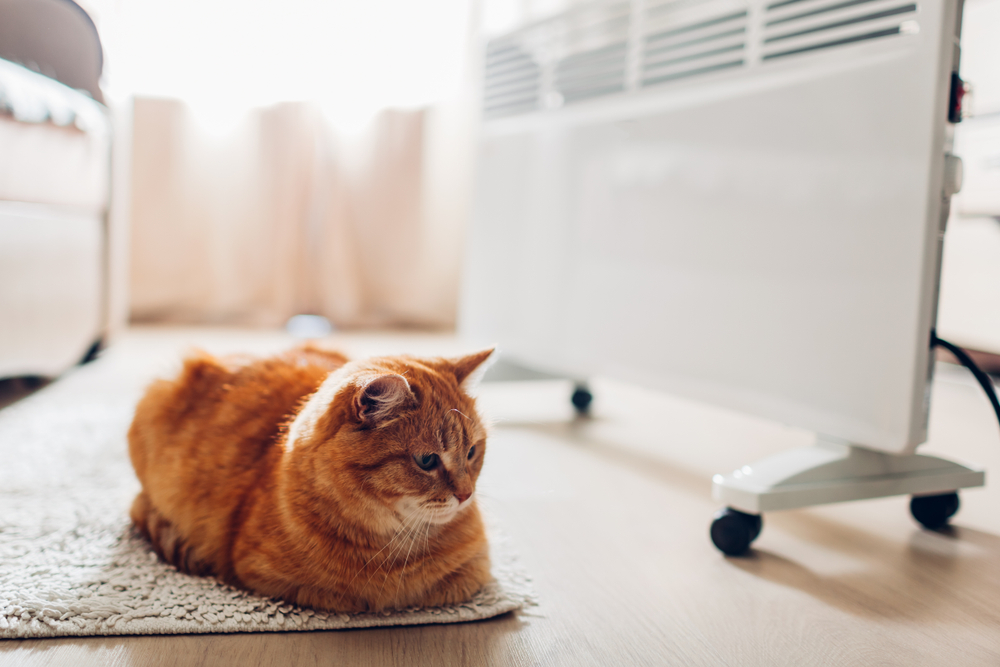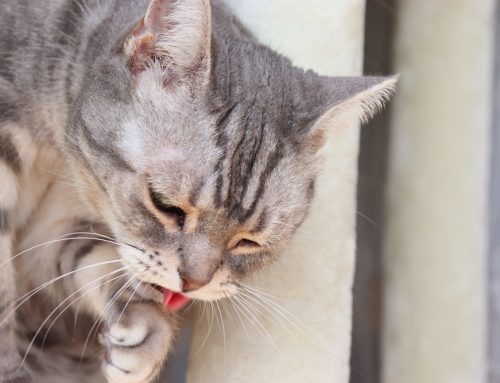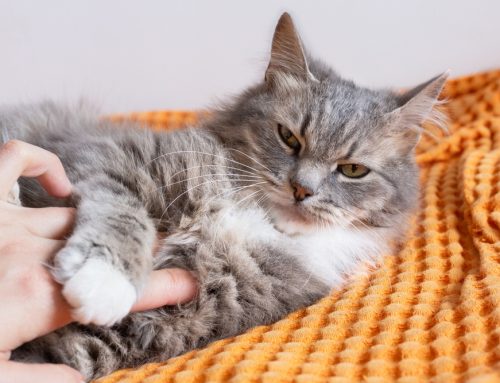As our bodies age, most of us have or will become intimately acquainted with some level of arthritis. Our once effortless movements are slowed and challenged by aches, pains, stiffness, and reduced mobility. In short, they are impossible to ignore.
Our four-legged friends can’t tell us how they’re feeling, which makes recognizing their arthritis much more challenging. Also, dogs and cats are naturally stoic and will mask or hide pain and weakness out of self-defense. Sadly, the longer your pet’s arthritis goes untreated, the more damage the condition can cause.
Don’t let your pet suffer in silence. Use this quiz from Tidmore Veterinary Hospital to find out if you need to talk to your veterinarian about your pet’s arthritis.
My pet [always, sometimes, never] hesitates before jumping up and down or using the stairs. They [have, have not] stumbled or fallen while attempting to jump or climb.
Up or down movements, such as jumping and stairs, force your pet to shift their weight—potentially onto painful joints—and accept significant forces and stress (e.g., the elbows and shoulders absorbing the shock when landing). Muscle and strength loss secondary to arthritis make these movements extra challenging and painful, because pets no longer feel supported or in control, and they likely will be especially reluctant to continue to jump or climb.
Such hesitation can also be caused by vision changes, so a veterinary examination is necessary for accurate diagnosis.
My pet [always, sometimes, never] seems slow or cautious when rising. They lie down gingerly [always, sometimes, never], or collapse in one quick motion.
Arthritis can affect any body joint where two bones intersect, although the major weight-bearing joints, including the hips, stifles (i.e., knees), elbows, carpi (i.e., wrists), tarsi (i.e., ankles), and spine, are most often affected. Chronic inflammation inside the joint damages the healthy cartilage (i.e., a smooth, shock-absorbing substance that covers each bone end) and reduces joint fluid (i.e., the nutrient-rich lubricant that ensures frictionless motion). As movement becomes increasingly painful, pets experience reduced range of motion and increased stiffness, which is most notable during transitions, including rising and lying down or moving from sitting to standing. Pets may move slowly or keep their joints extended—rather than flexed—while lying down (e.g., some arthritic dogs may “flop” onto their sides) to avoid any pain
My pet [always, sometimes, never] takes a break during walks or play.
Exercise intolerance can be an early indication that your pet is painful or weak. Dogs may refuse to walk, try to turn back, or stop and sit or lie down. Formerly playful dogs may no longer engage in their favorite games or show stress-related behaviors, such as sniffing, scratching, or yawning.
Changes in your pet’s activity level, such as less energy, are always concerning and can have numerous causes, so schedule an examination at Tidmore Veterinary Hospital if your pet is no longer interested in their favorite activities or cannot maintain their usual pace.
My pet [always, sometimes, never] seeks out warm places to rest.

Heat is therapeutic and can ease tension in stiff and sore muscles. Arthritic pets are naturally drawn to cozy beds and heat-emitting sources (e.g., a wood burning stove, fireplace, heat register, sun beam, or other pets or human companions) and may curl up when they sleep to maintain body heat and ease spinal pressure.
My pet [always, sometimes, never] seems unstable on slick surfaces or avoids them altogether.
The reduced joint flexibility and muscle loss that arthritic pets experience can affect their core strength, causing imbalance and coordination loss. Pets may also shift their weight to unaffected areas, which changes their posture and gait.
Arthritic pets who feel vulnerable or unstable on smooth surfaces often try to scramble across the area, increasing their fall risk. Other pets will develop a strong aversion and avoid the area altogether.
My pet is [always, sometimes, never] reluctant to let me pet or handle certain areas.
Arthritic pets may be unusually sensitive to touch, petting, or restraint. Formerly affectionate and social pets may appear to avoid, withdraw, or react uncharacteristically (e.g., growling, yelping, biting, or fleeing) to normal interactions, while a pet who associates specific activities with discomfort and pain may be uncooperative or combative. In aging pets, these changes are often overlooked and attributed to age-related stubbornness which, sadly, means many pets do not receive a proper diagnosis and treatment.
My pet’s grooming behavior [has, has not] changed.
Your pet’s grooming habits reveal a lot about their physical and emotional health. Sudden over-grooming focused on a particular area (e.g., a joint) or generalized neglect can both indicate pain. Pets often over-groom to relieve discomfort, or stop grooming areas that are painful or impossible to reach because of reduced flexibility.
An altered grooming routine can result in complications, including secondary bacterial infections, urine scald, moist dermatitis (i.e., hot spots), and self-inflicted wounds, and should receive veterinary attention.
If you answered “Always” or “Sometimes” to any question, it’s time to schedule an appointment at Tidmore Veterinary Hospital, because without treatment, arthritis will progress and ultimately impact your pet’s quality of life. Your veterinarian will examine your pet from nose to tail to determine the source and cause of their pain, rule out other causes, and recommend a treatment plan to help preserve and improve your pet’s mobility.
Contact the caring team at Tidmore Veterinary Hospital to schedule your pet’s appointment.








Leave A Comment